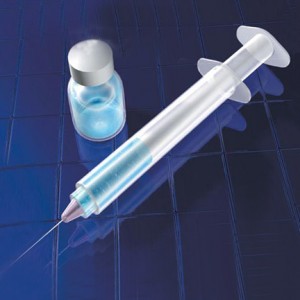 Between the 2 vaccines now available for protection against human papilloma virus (HPV), the quadrivalent vaccine may have an advantage over the bivalent vaccine with respect to costs and quality of life, but the bivalent vaccine may prevent more deaths from cervical cancer, according to new research.
Between the 2 vaccines now available for protection against human papilloma virus (HPV), the quadrivalent vaccine may have an advantage over the bivalent vaccine with respect to costs and quality of life, but the bivalent vaccine may prevent more deaths from cervical cancer, according to new research.
Mark Jit, PhD, MPH, a mathematical modeler from the Health Protection Agency in London, United Kingdom, and colleagues published their findings online September 27 in the BMJ.
As described in the article, the HPV bivalent vaccine (Cervarix, GlaxoSmithKline) targets HPV types 16 and 18, which are estimated to cause more than 70% of cervical cancer cases worldwide. In contrast, in addition to HPV types 16 and 18, the quadrivalent vaccine (Gardasil, Merck) also targets HPV types 6 and 11, to which anogenital warts and recurrent respiratory papillomatoses are attributed.
In 2008, the UK government selected the bivalent vaccine for protection against HPV based on a previous analysis led by the same authors, indicating that the bivalent vaccine would have to be £15 to £23 cheaper per dose to be as cost-effective as the quadrivalent vaccine because of “the lack of protection against anogenital warts,” as understood at that time. Since then, however, new data have emerged. First, studies have indicated that both the bivalent and the quadrivalent vaccines may also be effective against certain oncogenic HPV types not included in the respective vaccines. In addition, the quadrivalent vaccine has shown protection against vulvar, vaginal, and anal cancer; and the bivalent vaccine has shown some protection against anal infection, which may ultimately translate into prevention of anal cancer.
